What Follows is a combination of my notes, memory, and opinions from A Tonic 2011 - Some things may be inaccurate, misleading, or even missing - please feel free to point out any errors out or add your own voice in the comments section below.
David Oliver opened by reminding everyone of the importance of looking back on the great photographers who have gone before. Afterall without knowing where things have come from how can you know where you are going or even where you are? In particular he spent time pointing to
David Moore
Graham McCarter
Lewis Morely
He also talked about his own experience of working around other photographers and being open to the feedback that they provide. While he did mention feedback from mentors who he still seeks advice from one particular piece of feedback seemed to have stuck in his mind - a comment from an unnamed advertising photographer in a studio he used to work for:
This comment, challenge, question, whatever you want to call it, seemed to serve as a springboard. While at the time he felt that his images were strong he later realised that a strong image is something that is truly special. In fact he suggests that he has only a handful of strong images from his photography career to date (one such image being the Balmoral). This lead to one of the key messages of his presentation
Now, you might expect this to be fairly obvious to photographers who are employed by people to take photos or are paid for the photos that they take. However in a world full of marketing madness where style (spin) is often emphasised over substance (the product/images) it can be a surprisingly easy point to lose track of. In fact it has very important implications for us.
Strong images tell people who we are
Strong images tell people a lot about our particular style. Importantly while clients may not neccesarily hire us to produce a strong image (they are more likely to hire us to produce nice or pretty images) strong images may be what brought them to us. importantly strong images can be ugly and identifying the difference between pretty images and strong images is an important exercise for any photographer. For me strong images have a power to create a strong emotion, desire, or drive within the viewer. Ideally a strong image will have this effect on any viewer, in some cases however it is necessary for the viewer to understand the context or story surrounding the image for this power to manifest. David gave an example of a wedding image which - in itself - was pretty but not powerful. However when paired with its backstory of extraordinary loss the picture came to show a form of strength/determination in the face of adversity that gave the image enormous emotional strength. Was this image strong? Not by itself - a point that he would revisit later.
Individual images can last a lifetime and keep bringing you work
Self explanatory :)
Charity projects can give us exposure
Charity projects raise awareness of causes and the photographers who shoot them. While you may not gain financially you do gain experience, understanding, and perspective.
Presentation matters
If we are our images it makes sense to present our images in the best way that we can. Presentation on quality product - such as fibre-based/fine-art papers with Ultra Chrome ink - ensures that the images will last and provides an opportunity for split price points with increased profits. In fact presentation on these sorts of products can allow an image to be placed in sunlight for 6 years (maybe more) with no visible degradation in colour quality. Lab (Resin Coated (RC)) prints on the other hand would be lucky to last 3 years in the same conditions. In the shade RC prints can be expected to last 20 years or so while Ultra Chrom prints should last 100 years or more. To get equivalent performance from an RC print it would need to be kept in an album. Finally beware of what you put in front of your images. Glass can give images a green cast while perspex should not.
Yet with these points in mind a lot of what we do comes down to luck. Being in the right place at the right time with the right equipment to get the right shot. 2 examples of this were given. 1 involved the capturing of a strong photograph, the other an example of an iconic photograph. Yes, there is a difference.
Luck and a strong photograph
The Balmoral - One of David's strong images - almost didn't happen. It was taken during a family portrait session with a spare frame on the end of a roll of film. David turned around, saw what he liked, and took the shot. While a number of people have tried to replicate the shot they have not been able to - this is because the shot is the result of a combination of factors that occurred by chance rather than design. In particular the presence of the mist in the photo - an event that is very uncommon in that area. This photograph was a product of being in the right place, at the right time, with the right equipment. As such it is a strong argument for always having your camera with you.
Luck and an iconic image
Lewis Moorely took a nude photo of a prostitute - Christine Keeler - in the 1960s. The image was good but probably wouldn't have been strong enough to sell to your average punter on its own. However later it emerged that the prostitute's clients included KGB agents and a British minister. Lewis had the only nude shot and the image was printed everywhere. Through a little bit of luck the image had become iconic.
David's studio survived the crash of the 1980s and is in a good position to survive the current crash. How has he done this? The simplest summary of his answer is that he has achieved this by focussing on his clients.
No pressure selling
David has avoided the advice of marketing gurus on the understanding that marketing gurus make money by selling ideas to photographers rather than selling photos to clients. If they have no experience doing what he does why should he listen to their advice? Rather than pressure clients into making purchases by threatening them with the deletion of files or sudden price spikes he leaves the clients along with printed 3x2 proofs and a pricelist. David then wanders off allowing them time to make their decision.
Focussing on quality products
David also focuses on quality products. Arguably this focus reduces the need for further salesmanship on his behalf as clients can have faith in the fact that if they purchase something it will be worth the money that they are spending on it. This even extends to the sales session - he provides prints on paper as projected images are of a reduced quality.
Focussing on what the client wants
David takes the time to understand what his clients want. He treats people as people rather than numbers being churned through a system. This makes people feel valued, ensures that they are happy with the work and leads into the next point.
Repeat Business and Referrals
All of this together has lead to repeat business and referrals.
Inspiration
Staying inspired is key. As photographers we are in a position where there is always more to be learnt - there will always be new things to look at and new ways of looking at them. This links back to the beginning - the benefit of looking back on the work of great photographers who have come before - but also links us to the present and the future. Look around you to see what other people are viewing and seeing. If you find a photograph that you like - buy it and frame it. It will become an investment - if it not a financial investment an investment in your continued inspiration.
Critically none of this has been tested scientifically. While he has received positive feedback from people who have implemented similar systems it is entirely possible that the change may be acting as something of a placebo. I implemented a change that I expect to work in such a way, therefore the change does work in such a way regardless of what the change actually is.
David Moore
Graham McCarter
Lewis Morely
He also talked about his own experience of working around other photographers and being open to the feedback that they provide. While he did mention feedback from mentors who he still seeks advice from one particular piece of feedback seemed to have stuck in his mind - a comment from an unnamed advertising photographer in a studio he used to work for:
"When are you going to show me a strong image?"
This comment, challenge, question, whatever you want to call it, seemed to serve as a springboard. While at the time he felt that his images were strong he later realised that a strong image is something that is truly special. In fact he suggests that he has only a handful of strong images from his photography career to date (one such image being the Balmoral). This lead to one of the key messages of his presentation
We are our images
Now, you might expect this to be fairly obvious to photographers who are employed by people to take photos or are paid for the photos that they take. However in a world full of marketing madness where style (spin) is often emphasised over substance (the product/images) it can be a surprisingly easy point to lose track of. In fact it has very important implications for us.
Strong images tell people a lot about our particular style. Importantly while clients may not neccesarily hire us to produce a strong image (they are more likely to hire us to produce nice or pretty images) strong images may be what brought them to us. importantly strong images can be ugly and identifying the difference between pretty images and strong images is an important exercise for any photographer. For me strong images have a power to create a strong emotion, desire, or drive within the viewer. Ideally a strong image will have this effect on any viewer, in some cases however it is necessary for the viewer to understand the context or story surrounding the image for this power to manifest. David gave an example of a wedding image which - in itself - was pretty but not powerful. However when paired with its backstory of extraordinary loss the picture came to show a form of strength/determination in the face of adversity that gave the image enormous emotional strength. Was this image strong? Not by itself - a point that he would revisit later.
Individual images can last a lifetime and keep bringing you work
Self explanatory :)
Charity projects can give us exposure
Charity projects raise awareness of causes and the photographers who shoot them. While you may not gain financially you do gain experience, understanding, and perspective.
Presentation matters
If we are our images it makes sense to present our images in the best way that we can. Presentation on quality product - such as fibre-based/fine-art papers with Ultra Chrome ink - ensures that the images will last and provides an opportunity for split price points with increased profits. In fact presentation on these sorts of products can allow an image to be placed in sunlight for 6 years (maybe more) with no visible degradation in colour quality. Lab (Resin Coated (RC)) prints on the other hand would be lucky to last 3 years in the same conditions. In the shade RC prints can be expected to last 20 years or so while Ultra Chrom prints should last 100 years or more. To get equivalent performance from an RC print it would need to be kept in an album. Finally beware of what you put in front of your images. Glass can give images a green cast while perspex should not.
We capture luck
Yet with these points in mind a lot of what we do comes down to luck. Being in the right place at the right time with the right equipment to get the right shot. 2 examples of this were given. 1 involved the capturing of a strong photograph, the other an example of an iconic photograph. Yes, there is a difference.
Luck and a strong photograph
The Balmoral - One of David's strong images - almost didn't happen. It was taken during a family portrait session with a spare frame on the end of a roll of film. David turned around, saw what he liked, and took the shot. While a number of people have tried to replicate the shot they have not been able to - this is because the shot is the result of a combination of factors that occurred by chance rather than design. In particular the presence of the mist in the photo - an event that is very uncommon in that area. This photograph was a product of being in the right place, at the right time, with the right equipment. As such it is a strong argument for always having your camera with you.
Luck and an iconic image
Lewis Moorely took a nude photo of a prostitute - Christine Keeler - in the 1960s. The image was good but probably wouldn't have been strong enough to sell to your average punter on its own. However later it emerged that the prostitute's clients included KGB agents and a British minister. Lewis had the only nude shot and the image was printed everywhere. Through a little bit of luck the image had become iconic.
David's Keys To Survival
David's studio survived the crash of the 1980s and is in a good position to survive the current crash. How has he done this? The simplest summary of his answer is that he has achieved this by focussing on his clients.
No pressure selling
David has avoided the advice of marketing gurus on the understanding that marketing gurus make money by selling ideas to photographers rather than selling photos to clients. If they have no experience doing what he does why should he listen to their advice? Rather than pressure clients into making purchases by threatening them with the deletion of files or sudden price spikes he leaves the clients along with printed 3x2 proofs and a pricelist. David then wanders off allowing them time to make their decision.
Focussing on quality products
David also focuses on quality products. Arguably this focus reduces the need for further salesmanship on his behalf as clients can have faith in the fact that if they purchase something it will be worth the money that they are spending on it. This even extends to the sales session - he provides prints on paper as projected images are of a reduced quality.
Focussing on what the client wants
David takes the time to understand what his clients want. He treats people as people rather than numbers being churned through a system. This makes people feel valued, ensures that they are happy with the work and leads into the next point.
Repeat Business and Referrals
All of this together has lead to repeat business and referrals.
Inspiration
Staying inspired is key. As photographers we are in a position where there is always more to be learnt - there will always be new things to look at and new ways of looking at them. This links back to the beginning - the benefit of looking back on the work of great photographers who have come before - but also links us to the present and the future. Look around you to see what other people are viewing and seeing. If you find a photograph that you like - buy it and frame it. It will become an investment - if it not a financial investment an investment in your continued inspiration.
Critically none of this has been tested scientifically. While he has received positive feedback from people who have implemented similar systems it is entirely possible that the change may be acting as something of a placebo. I implemented a change that I expect to work in such a way, therefore the change does work in such a way regardless of what the change actually is.
Final Tips and Thoughts
David also dropped a number of tips that don't fit easily into the sections above. These included:
SunCalc
SunCalc is a web based app tied to google maps. It predicts the position of the sun and lays the information over a map of the area you intend to shoot in.
SunCalc
SunCalc is a web based app tied to google maps. It predicts the position of the sun and lays the information over a map of the area you intend to shoot in.
Wear a White shirt
This will provide a little bit of bounce and may give you some catch lights in your subject's eyes.
Avoid Flash
Flash kills faces.
Use your camera bag to secure your reflector
This provides an alternative to flash and can work quite well to fill in people's faces.
Film shooting was theatre
A key advantage of digital photography is the ability to take an endless number of shots with very little hassle. While this often leads to hell in the editing phase it has made also made the shoot itself less theatrical. Without the limitation of a roll or 2 of film there is no longer a need to pretend to adjust the lights in order to warm up a subject. While this does perhaps lead to a more honest version of photography does it also mean that something has been lost? Do we take less care in taking our images? Do our subjects feel that are getting less value through reduced fiddling?
Get the Film Look Back with Nik Software
David loves the look that film grain and papers gave photographs. Nik software and Silverefex allow him to bring that look with him in the digital era. If you're also a fan of the film look give them a go and let us know your thoughts.
Get the Film Look Back with Nik Software
David loves the look that film grain and papers gave photographs. Nik software and Silverefex allow him to bring that look with him in the digital era. If you're also a fan of the film look give them a go and let us know your thoughts.
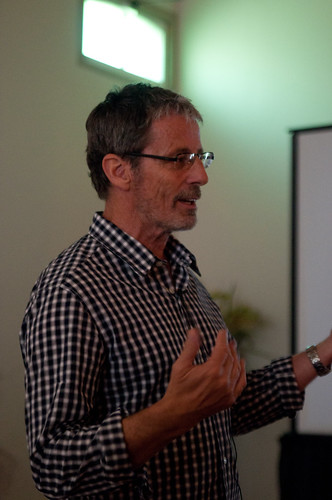
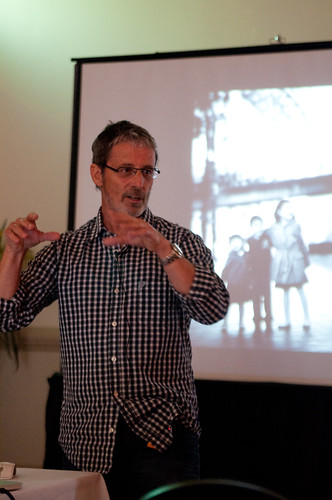
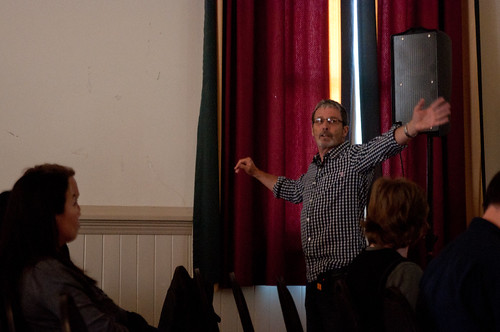
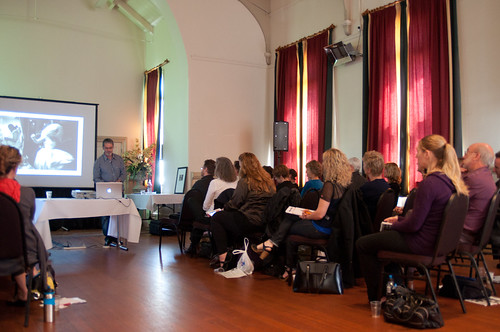
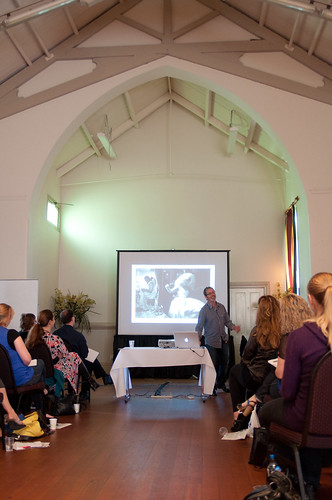

0 comments:
Post a Comment